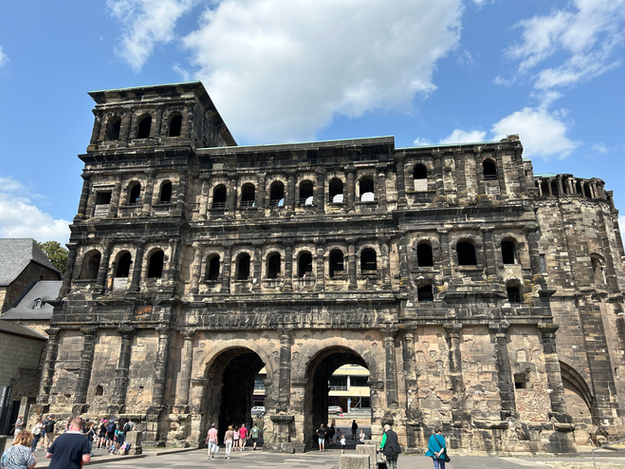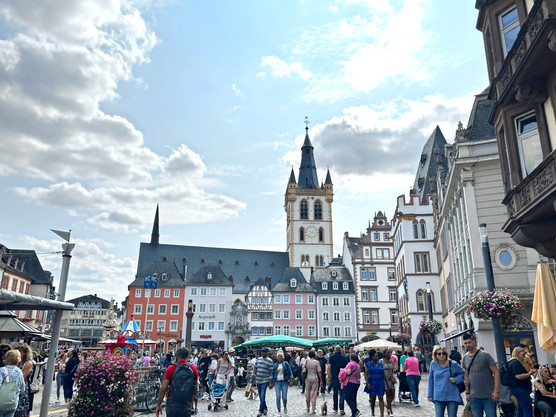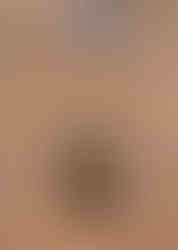Best Things To Do in Trier in One Day
Updated: Aug 17, 2023
Trier is considered to be the oldest city in Germany, which was founded by the Celts in the 4th century BC as Treuorum and was conquered 300 years later by the Romans. In this post, you will find out what are the best things to do in Trier, what places you need to visit to shape your impressions about the city and to enjoy your time in Trier.

Trier is located in the Mosel region, which is famous for its white wines, close to the border with Luxemburg (10 km), France (40 km) and Belgium (80 km), it makes it easy to combine a visit to Trier with exploring other neighbouring regions of the above countries.

One day is enough to see most of the attractions of Trier - as we are based in Luxembourg, we usually do half-day trips, but continue coming back again and again. For first-time comers, it would be better to stay in Trier at least for one full day - better for the night as well, to enjoy dinner and a glass of local Riesling or Rivaner on the terrace.

What are the best things to do in Trier? Here you can find the list of top attractions and activities that you can do in Trier in one day.
Visit Porta Nigra
Porta Nigra - the impressive well-preserved Roman city gate, that was built in 170 AD, and is considered to be one of the UNESCO World Heritage Sites. I suggest you start exploring Trier from Porta Nigra, as it is the beginning of the pedestrian shopping street, Simeonstraße, that will guide you to other main attractions of the city.
If you want to check out the gates from the inside, climb up and check out the different levels of the Porta and enjoy nice city centre views.
Get Lost in the Historical Centre
Once you go through the Porta Nigra, continue your journey by walking along Simeonstraße - the main shopping street which connects Porta Nigra with Hauptmarkt (Market Square).
Do not be afraid to turn in any direction to explore the historical centre, where you can enjoy and find plenty of cafes and restaurants, where you can stop for a nice lunch.
Try Traditional Cuisine
Where to eat in Trier? For lunch, stop at one of the numerous restaurants that serve traditional German food and beer. During our last visit to Trier, we went to Früh bis spät, where you can enjoy perfect schnitzels, roastbeefs and some local specialities. Order the beer that they serve - especially the one that is brewed in Köln - Cölner Hofbräu Früh.
Enjoy the Trier Market Square (Haupfmarkt)
Haupfmarkt is the central square of Trier, that existed since the 10th century and features many impressive historic buildings and landmarks. The cross that you can observe in the photos was installed by Archbishop Heinrich in 958 and is considered one of the oldest market crosses in Europe. You can see four holes where chains would have been attached to punish law-breaking citizens publicly.
The Market Fountain, which was created in 1595, shows St. Peter, the patron saint of the city, standing on top, surrounded by the four virtues of good city government: Justice, Strength, Temperance, and Wisdom and also by monsters and monkeys.
Apart from historical landmarks and amazing houses, you can find there plenty of cafes, restaurants, shops, and buy some flowers or fruits and vegetables, depending on when you visited the city. During the Christmas period, you will find there a beautiful Christmas market, where you can drink gluhwein and try some traditional snacks.
Explore the Trier Dom (St. Peter Cathedral)
While exploring Market Square, you might have noticed already a huge cathedral - the St. Peter Cathedral, which is considered one of the oldest German churches, it was built in the 4th century after the conversion of Constantine the Great into Christianity.
Later it was destroyed first by the Francs, then by the Vikings in the 9th century, but rebuilt in the 11th century - when its impressing west facade was built.
Check out the Church of Our Lady
You do not need to walk a lot to reach the Church of Our Lady (Liebfrauenkirche).- it's just next to the cathedral, these two buildings share a common wall. According to UNESCO, the church is "the earliest church built in French High Gothic style outside France."
The church was built in the 13th century; during World War II, the hipped roof of the church was destroyed and replaced in 1945. In 2003, the roof was replaced with a steeper roof, which you can observe now.
In 1986, the church was added to the UNESCO World Heritage List as part of the Roman Monuments, Cathedral of St Peter and Church of Our Lady in Trier UNESCO World Heritage Site.
Discover the Basilica of Constantine
The next destination to discover would be the Basilica of Constantine (Aula Palatine), which is located just 4 minutes walk from the church. The Basilica was built around 310 AD by the order of Constantine the Great.
During the Middle Ages, the Basilica was used as the residence of the Bishop of Trier. In 1856, the Aula Palatina became a Protestant church. In 1944, the building burned due to an air raid conducted by the allied forces during World War II, and reconstructed in 1956.
See the Electoral Palace
The beautiful Rococo-style building attached to the Basilica is the Electoral Palace. In the late 16th century, the ancient palace assembly hall was narrowed, and three Renaissance-style wings were added. In the 18th century, the Renaissance southern wing was replaced by a rococo-style wing.
Spend some time to discover the beauties of the palace's gardens, where you can find amazing 18th-century sculptures by Ferdinand Dietz.
Explore Imperial Baths & the Amphitheatre
Once you went through the gardens of the Electoral Palace, you will face the remarkable ruins of the Roman Imperial Baths (Kaiserthermen), that were constructed in the 4th century and were converted to fortifications during the Middle Ages. Check out the opening hours to enter the museum complex to see the baths yourself (and to see this nice foot at the entrance to the complex).
Also, walk a bit further to see the Amphitheater constructed around the 2nd century AD with a 25,000 seating capacity just outside the old city walls.
Karl Marx: house-museum & traffic lights
Trier is also known as the city where Karl Marx, the father of Marxism, was born in 1818. Karl Marx had a huge impact on the history of the 20th century and the subsequent development of half of the world. Now, in 2023, the house is still popular - look at this crowd coming from China, where the ideas of Marx have determined the way the country is following.
Apart from this, while exploring Trier you might find some other references to Karl Marx. For example, a bronze statue of the philosopher was gifted to Trier by the Chinese government in 2018, to celebrate the 200th birthday anniversary.
The statue is installed on Simeonstiftplatz, close to Porta Nigra, and you can also notice that traffic lights have a figure of red/green Karl Marx on them - another way to honour the famous Trier citizen.
I hope this post was helpful for you to determine the list of best things to do in Trier and to plan how to spend a day (or the weekend) in this marvellous city.
































































Comments